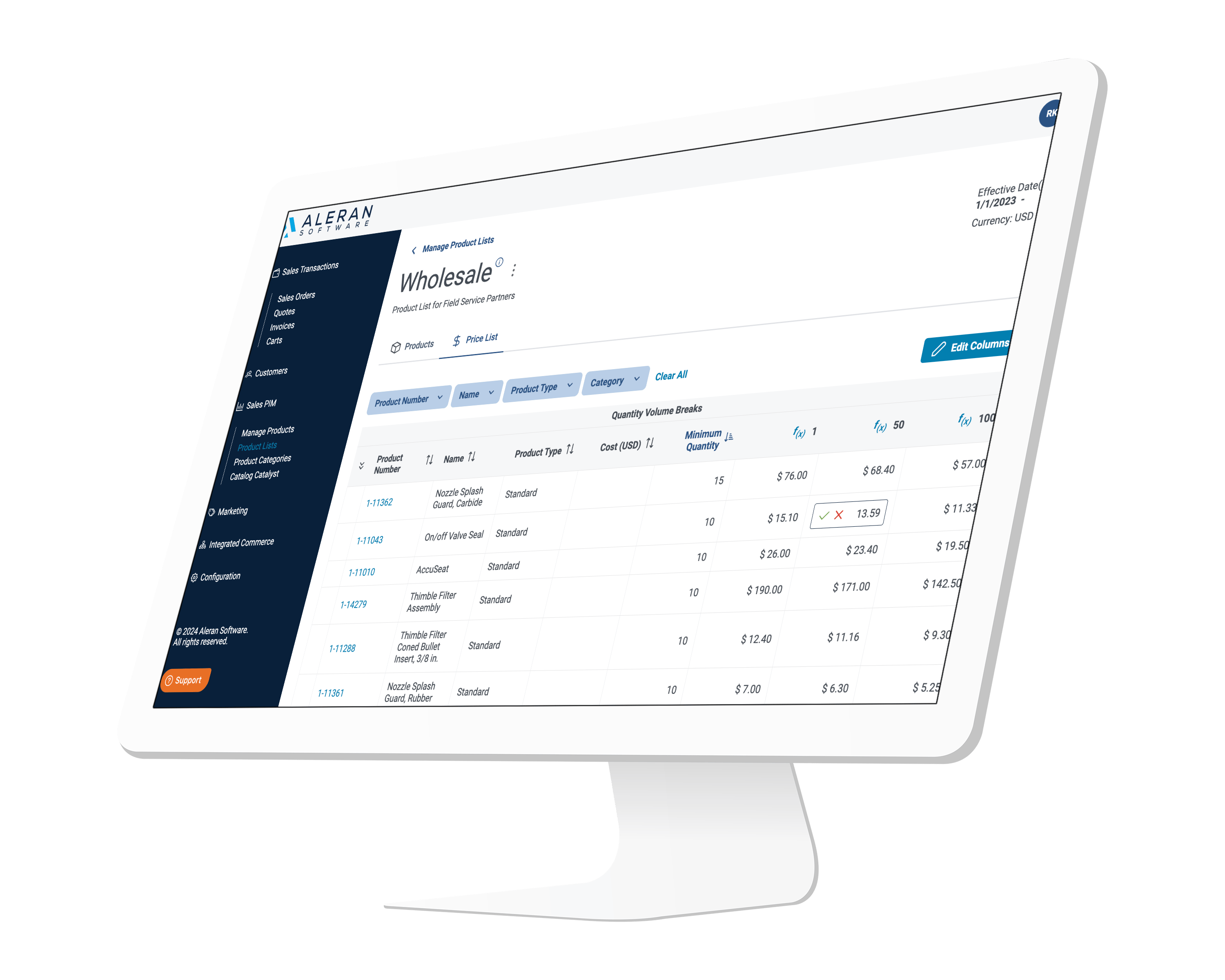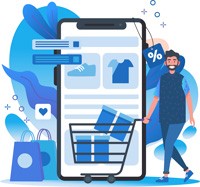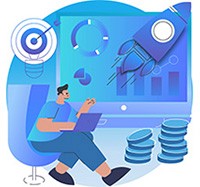The Ultimate Guide to B2B Ecommerce Solutions
CHAPTER 1
B2B 101
The ABCs of B2B
B2B vs. B2C Target Audiences
Modern B2B Marketing
CHAPTER 2
B2B E-Commerce
Why is eCommerce a “Critical Strategy”
How to find the the best-fit B2B e-commerce platform
CHAPTER 3
Succeeding in B2B eCommerce
The ABCs of B2B
B2B vs. B2C Target Audiences
Modern B2B Marketing
CHAPTER 4
The Future of B2B is E-Commerce Solutions
SaaS E-Commerce Platforms
Why B2B E-Commerce is Important
Today’s B2B Buyer
CHAPTER 5
B2B Marketplaces and Integration Capabilities
Self-Service in B2B E-Commerce
Vertical B2B Marketplaces are Soaring
5 Must-Have B2B Integration Capabilities
CHAPTER 6
How to Win in an Evolving B2B Landscape
5 Common eCommerce Mistakes
The Amazon Challenge
Finding the right technology partner to implement your B2B E-Commerce strategy
In today’s economic climate, disruption has become ‘business as usual.’ For any company hoping to stay competitive, digital buying and selling is not just an option, but a strategic necessity.
Firms that haven’t fully embraced e-commerce should consider this warning: the time to adapt is now. Does your organization have the technologies, skills and strategic know-how to attract and retain today’s, fast-evolving B2B customers?
#B2BCommerce #B2BMarketplaceSoftware #B2BeCommercePlatforms
TL;DR
CHAPTER 1
B2B 101
- The ABCs of B2B
- B2B vs. B2C Target Audiences
- Modern B2B Marketing
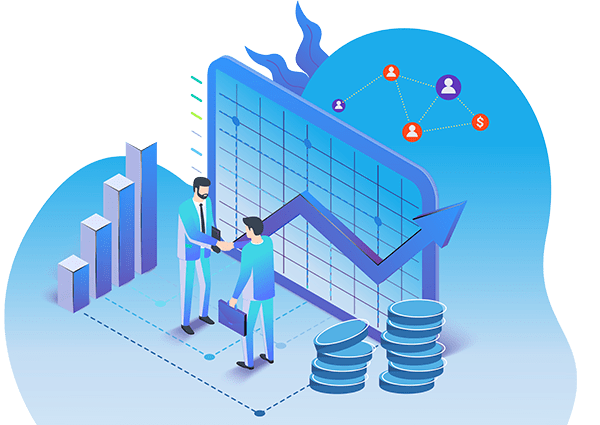
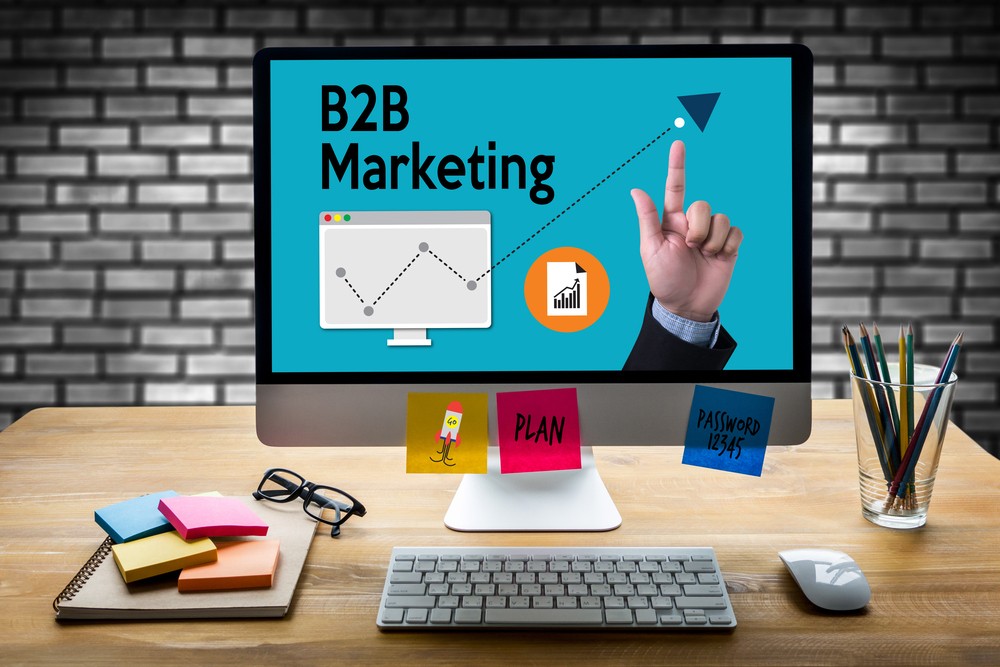
The ABCs of B2B
At first glance, the B2B market seems simple to understand. By definition, Business-to-Business (B2B) companies sell products and services to other businesses, whereas Business-to-Consumer (B2C) companies sell directly to consumers. Focus a microeconomic microscope on the market, however, and B2B transactions become far more complex.
Examples of B2B companies are wide ranging from software to machinery and even maintenance and include such companies as: ADP, which provides payroll and financial services to enterprise customers; Caterpillar, which manufactures and sells machinery and engines to construction, mining and agricultural firms; Shopify, which offers digital tools and services to other e-commerce companies; and W. Grainger, Inc, a Fortune 500 industrial supply firm that provides maintenance, repair and operations services.
Read More
B2B vs. B2C Target Audiences
Beyond the obvious distinction that B2B firms sell to other businesses while B2C companies target individuals, there are key differences in how B2B and B2C companies define, market to, and sell to their target audiences.
On average, the B2B target audience is more diverse, makes higher-value purchases from each supplier, and takes longer to research and make purchase decisions than their B2C counterparts. In fact, B2B sales take 22% longer today than they did five years ago.
The main reason for these behavioral differences is the composition of each target audience. Typically, a B2C buyer is also a user of the product/service, as well as the purchase decision-maker. By contrast, B2B users, buyers and decision-makers are often three different people or three different groups of people:
Users
Buyers

Decision-makers
Modern B2B Marketing
Given the size, complexity, segmented audience, and educational requirements of B2B transactions, many B2B sellers have adopted modern, omni-channel marketing methods. In addition to deploying offline and digital marketing tools, a B2B company may need to deploy a savvy and experienced sales team — one that coordinates closely with marketing — to build long-term relationships with every stakeholder group involved in the purchasing decision.
To create the kinds of robust relationships needed to close one-time sales and nurture repeat business, many sales teams must, over an extended timeframe, thoroughly educate the target audience about the features, functions and bottom-line value of their products/services via:
- Meetings (in-person and remote)
- Product demos
- Follow-up calls
- Print and digital collateral materials
Hence, while the typical B2C sales process is akin to a 100-yard dash in terms of strategy, time and effort, the B2B sales process resembles a marathon. As a B2B company, you must prepare to go the distance.
The Aleran Unified Commerce platform will get you selling without limits.
Talk to Expert
CHAPTER 2
B2B E-Commerce
- Why is eCommerce a “Critical Strategy”
- How to find the the best-fit B2B e-commerce platform
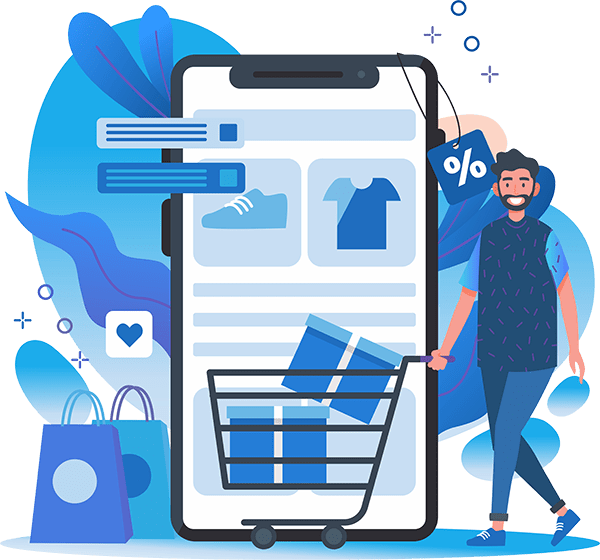
E-Commerce is now a ‘Critical Strategy’
Escalating customer expectations, combined with the market and supply-chain disruptions caused by the global pandemic, have quickly transformed e-commerce from a value-added option to a strategic necessity. In fact, a new report from DigitalCommerce360 names e-commerce adoption as a critical strategy for many manufacturers, adding that most manufacturers are now selling more products online than through any other channel.
The survey of 800+ manufacturers also found that 98% of companies already have an e-commerce channel in place or are in the process of adding one, citing increased sales, improved customer relationships, increased profit margin, and improved product/brand awareness as the primary reasons for accelerating adoption.
Finding the best-fit B2B e-commerce platform
To better support their B2B customers, manufacturers are on the hunt for ways to improve the buying journey at every relevant touchpoint. As they seek out solutions, however, they are discovering that not all e-commerce platforms and tools are created equal. With more sales channels and options than ever before, decision-makers are wondering how to find the best-fit e-commerce solution.
Manufacturers who are having issues with the effectiveness of their e-commerce implementations need to think holistically about their B2B e-commerce channel strategy. That means taking the time to understand both the benefits and downsides of different platforms and selling models. Without careful consideration, they run the risk of alienating their trusted channel partners – distributors, resellers, sales agencies, and retailers.
Ideally, the right e-commerce platform for your manufacturing business is more than a piece of technology. It’s a partner that will help you adapt and scale your business in a rapidly changing sales landscape.
To maximize value and ROI, most manufacturers would be best served by choosing an all-in-one e-commerce platform that offers dedicated options for B2B and B2C e-commerce, as well as marketplace capabilities and ERP integration. In addition to offering the full range of tools and services that you need, your partner should also understand the special requirements of manufacturing.
The right fit e-commerce platform solution will support your growth. It will offer tools and technology to connect with – and meet the respective needs of – your buyers, reps, agents, and channel partners.
The Aleran Unified Commerce platform will get you selling without limits.
Talk to Expert
CHAPTER 3
B2B E-Commerce
- How to Succeed in B2B E-Commerce
- Common E-Commerce Roadblocks for Manufacturers
- Create Intuitive, Customized and Effortless E-Commerce Experiences
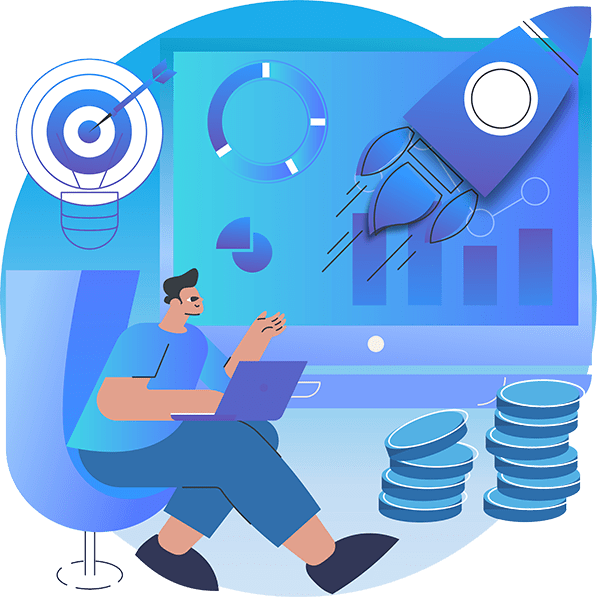
How to Succeed in B2B E-Commerce
Some organizations will struggle to create a successful digital sales environment while others make the process seem almost effortless. Some people love the creative process of pairing engaging sales and marketing content with carefully crafted Web designs. Then, there’s everyone else. It could take this second group of eager salespeople, entrepreneurs, and manufacturers many hours just to brainstorm a concept, let alone execute it.
The good news?
Technology has evolved to support the growing need for B2B e-commerce solutions. There are ways around that lengthy creative process that can be accomplished efficiently without compromising factors like visual appeal and quality of processing

Here are a few easy steps for launching a successful B2B e-commerce option – fast:
Keep it simple: Overthinking the process will do nothing but slow you down, so it’s crucial to utilize a tool that requires minimal setup and no technical expertise. Look for options that provide clean, attractive, customizable templates and styling, as well as hosting and platform support.
Put your customers first: Always remember that you are offering your customers a product, a service and an experience. Put yourselves in your customer’s shoes as you create your marketplace. Ask yourself what five things you want customers to see when they visit your company online. Consider what you like when you’re shopping online. Then implement your marketplace with a platform that allows you to customize the way customers view your merchandise.
Make the technology do the heavy lifting: After the website is set up and customized, harness its automation and integration processes to save time and process orders more efficiently. In addition to using the software to manage products, orders, client registrations, and payments, put the site to work by integrating a clickable, easy-to-navigate catalog. Your business’s catalog is the heart of your sales program. Significant resources, time, and intelligence go into the creation of this virtual showroom of your company’s offerings. To reap the rewards of all that effort, create a user-friendly, point-and-click catalog that truly engages the customer.
Find the right B2B Ecommerce software solutions
The Future of B2B is E-Commerce
At the dawn of the 20th century, the U.S. automobile market was insignificant. In 1900, there were just a few thousand cars chugging along America’s roads, and early motorists were often advised to “get a horse.” By mid-century, however, the number of cars had soared to more than 60 million. A market that began as a trickle soon became a torrent.
Likewise, at the dawn of the 21st century, e-commerce comprised a tiny fraction of U.S. retail sales, accounting for just $34 billion of a $3 trillion market. Since then, e-commerce has enjoyed explosive growth. And Business-to-Business (B2B) e-commerce – online order transactions between businesses – is also growing rapidly as new digital models, platforms and sales strategies help manufacturers, retailers, wholesalers, and distributors to expand their audience reach and offer customers a more personalized and convenient buying experience.
By 2023, an estimated 17% of B2B sales in the U.S. will be generated online, up from 13% in 2019, and B2B e-commerce sales are projected to grow to $1.8 trillion from $1.2 trillion in 2021. A 2018 survey found that nearly half of companies conduct 50% to 74% of their corporate purchases online.
Examples of B2B e-commerce companies include well-known “digital players” like Amazon, Alibaba and Apple, as well as industry giants that rose to prominence long before the Digital Age – from ExxonMobil and General Motors to GE, Nike, Procter & Gamble and 3M, each of which generates billions of dollars in annual online transactions.
Common E-Commerce Roadblocks for Manufacturers
According to a recent survey by DigitalCommerce360, the COVID-19 pandemic quickened the pace of e-commerce adoption for many B2B manufacturing businesses. However, 81% of these manufacturers are reporting challenges with their current e-commerce strategy. Among the most common roadblocks reported are:
- Limited product data (32%)
- Inaccurate inventory information (30%)
- Complicated/lengthy checkouts (30%)
- Inability to reorder from previous orders (26%)
- Missing or limited visibility of delivery timelines (26%)
- No way to view and pay open invoices (25%)
- No way to track orders (22%)
To solve these issues, more than 36% of manufacturers will seek to change their e-commerce provider. But how can they ensure their next choice will satisfactorily address their most challenging roadblocks?
As a first step, manufacturers should carefully evaluate potential technology partners to find one that can meet the specific needs of their business. A good partner should provide:
Dedicated, tailored customer experiences to support both B2B and B2C customers
B2B transactions are more complex, with variable pricing structures, more stakeholders, and a longer sales cycle when compared to B2C. To provide the best possible experiences for audiences with different needs, manufacturers should consider separate, dedicated platforms for their B2B and B2C buyers. By creating streamlined digital e-commerce sites that address the unique needs of each user type, sellers will improve the customer experience, drive customer acquisition, gain market share, increase cash flow, and achieve higher growth rates than their competitors.
Support for your sales order management and processing workflows
The right e-commerce solution should offer manufacturers very specific functionality to streamline and automate their sales back office and most crucial processing workflows. Look for a solution that allows custom price levels, term account creation, inventory tracking, product catalog integrations, and sales team management.
Integration of your business-critical backend systems
When evaluating different e-commerce platform options, SMB manufacturers should look for a solution that can help them maintain business continuity by integrating with their most essential systems. Look for solutions with pre-built integrations to your enterprise resource planning software provider so you can easily connect your existing business applications to your e-commerce platform. Such integration capabilities should allow for flexibility in configuring data integration rules, plus workflows that help ensure that orders and the associated information (customers, addresses, payment, discounts, etc.) can flow seamlessly.
Create Intuitive, Customized and Effortless E-Commerce Experiences
Today, B2B buyers are looking for e-commerce interactions that mirror their B2C experiences. B2B sellers must now find ways to provide shopping experiences that are every bit as intuitive, customized and effortless. That being said, creating a personalized experience within a B2B e-commerce ecosystem requires a very different approach than it does within a B2C environment.
What is Personalization?
In the broadest sense, personalization is the ability to provide unique user experiences that meet a customer’s specific needs or add value in a given context. In e-commerce, that can mean tailoring a customer’s experience according to their unique order history (e.g., through an automatic upsell engine or recommending-products feed) or by streamlining an aspect of their user experience on the site (e.g., enabling faster, easier purchases).
B2C vs. B2B Personalization
B2C personalization generally leverages buying history and data from past or similar customer transactions to generate targeted add-ons for a purchase or to increase the purchase size. But because B2B e-commerce transactions are longer, more complicated, and involve multiple stakeholders, B2B personalization relies on finding new efficiencies that add value for customers.
Tips for B2B Personalization include:
Segmenting the audience. Effective B2B e-commerce personalization includes audience segmentation – i.e., delivering different experiences to different buyer types, but doing so without creating totally different applications or websites. Unique customer log-ins can help facilitate this goal, displaying different content, product lists, and pricing for specific accounts or customers.
Streamlining the order process. Personalization at checkout means the ability to configure the cart and ordering process according to buyer type, creating a smooth flow and an easy-to-use experience for customers. For example, customizing checkout might allow you to specify payment or delivery methods for some buyers, and not others, or to set different approvals for various stakeholders. The main idea is that you’re tailoring the ordering process according to customer needs in order to make the buyer’s experience as painless as possible.
Managing & creating catalogs. B2B catalogs can be long and difficult to navigate. Although knowledgeable sales staff can help guide users, B2B buyers increasingly prefer self-service during the research phase. To help customers find what they need, offer them tools that help customize and streamline catalog browsing and list management. Integrating your e-commerce with important sales data (ERPs and backend systems) can also help in this effort, providing useful transparency into inventory counts and logistics that help customers make their purchasing decisions. Searchable catalogs (by name, SKU, or even barcode) are also useful. In addition to catalog management, B2B sellers can use instant catalog publishing tools to create custom, flippable and shoppable catalogs for their sales teams and customers, increasing sales order efficiency and personalizing a crucial phase of the buying cycle for customers.
Ultimately, B2B personalization should demonstrate to your different customer types that you understand their needs and want to make their jobs easier. Doing so will help drive positive engagement, reduce your cost of sales, and drive efficiencies for the entire B2B e-commerce journey.
The Aleran Unified Commerce platform will get you selling without limits.
Talk to Expert
CHAPTER 4
The Future of B2B is E-Commerce
- SaaS E-Commerce Platforms
- Why B2B E-Commerce is Important
- Today’s B2B Buyer
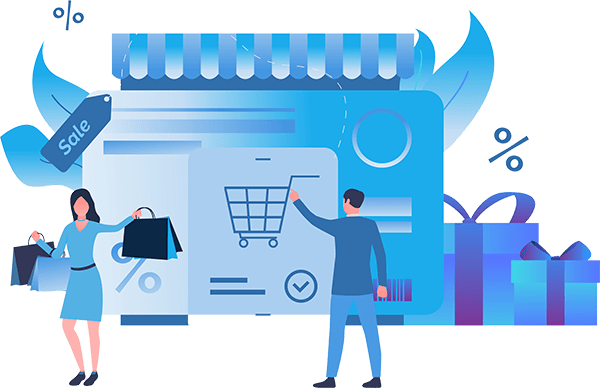
SaaS E-Commerce Platforms
Observing the similarities between B2B customer expectations and those of B2C customers, a significant number of B2B companies have entered the e-commerce sector by emulating the omnichannel strategies of successful B2C sellers (or their own B2C divisions) – and by also adopting tools to support the B2B e-commerce process.
Toward this end, some B2B firms have adopted SaaS e-commerce platforms to connect their warehouse, accounting, and other ERP systems using vendor management and e-commerce solutions for manufacturers. Some have also embraced SaaS-based sales order management platforms to support and manage their digital shops, catalogs, wholesale showrooms and marketplaces, creating a more consistent and effective customer experience across all buying channels.
Armed with these digital tools and strategies, B2B companies are able to enjoy e-commerce benefits that include: increased market reach, better management of suppliers and customers, enhanced engagement of customers with sales teams, keener analytics-based insights and, ultimately, higher sales volumes.
Why B2B E-Commerce is Important
The reason so many B2B enterprises are adopting e-commerce sales strategies is simple: that’s what B2B customers want, especially Millennial buyers. Millennials now comprise 44% of B2B decision-makers while 33% describe themselves as B2B-purchase influencers. Having come of age during the internet era, these tech natives expect B2B shopping and shipping experiences to be as fast, cost-effective and hassle-free as B2C experiences.
More so than their Boomer and Gen-X counterparts, Millennial buyers initiate the purchase process by surfing the Web. Forrester Research found that 74% of B2B buyers first conduct online research to educate themselves about potential sellers, as well as the benefits, features and business value of products and services.
Increasingly, B2B customers (especially younger ones) also:
Avoid interacting with salespeople during the early phases of the purchase process. In a recent survey, 60% of Millennials said they actively avoid sales reps until midway toward a decision. Post-pandemic, 70% to 80% of all B2B decision-makers prefer either remote human interactions or digital interactions throughout the sales process.

Want digital B2B e-commerce platforms to offer end-to-end solutions, flexible payment methods and self-service functionality. In 2020, 70% of B2B decision-makers said they would make self-service purchases in excess of $50,000.
Expect more personalized service from B2B sellers. In a 2017 survey, 73% of B2B executives said that customer expectations for personalized service are now significantly higher than they were just a few years earlier.
Although some of these buyer preferences and behaviors have been fueled by the pandemic, most B2B sellers view them as part of the “new normal,” not short-term anomalies.
The B2B buyer is evolving
In sum, B2B buyers are evolving – fast. They now demand streamlined and consistent experiences wherever they shop (brick-and-mortar, marketplaces, mobile app, desktop). Moreover, 82% of business buyers say they want the same experience during the B2B purchase process that they get when buying for themselves. They now have higher expectations for everything from page load times and detailed product information to quick checkout and self-service. Within manufacturing, the ability to re-order and to access sales histories and explainer videos are all highly prized by B2B buyers.
Given these expectations, industry experts predict that customer experience will eventually outshine pricing – and even product – when it comes to B2B brand differentiation.
But while B2B buyers may want the convenience of B2C models, their buying journeys remain quite different. B2B transactions tend to be complex, with variable pricing structures and a significantly longer sales cycle than anything found in B2C. B2B purchasing decisions may also involve an array of decision-makers and stakeholders, a huge quantity of products and specs, and a growing number of competing sales channels.
Today’s B2B buyers:
- Gather info independently using digital channels
- Spend less than one-fifth of their buying time meeting with potential suppliers
- Deal with 6-10 decision-makers for every purchase
- Overwhelmingly describe their buying journey as “complex”
The Aleran Unified Commerce platform will get you selling without limits.
Talk to Expert
CHAPTER 5
B2B Marketplaces and Integration Capabilities
- Self-Service in B2B E-Commerce
- Vertical B2B Marketplaces are Soaring
- 5 Must-Have B2B Integration Capabilities
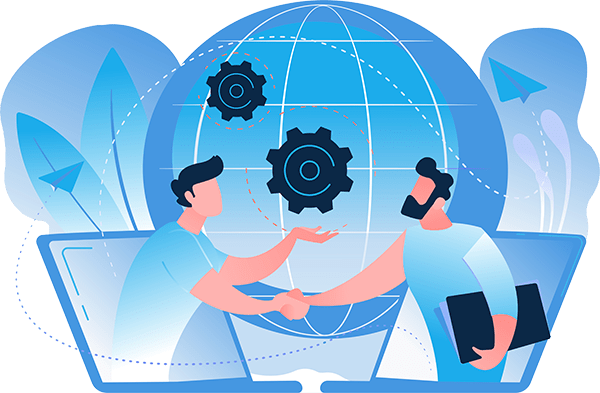
Self-Service in B2B E-Commerce
Facilitating B2B e-commerce transactions that are as fast and painless as most B2C transactions requires speed, price transparency, personalization, and seamless omnichannel experiences. And increasingly, it also requires self-service at checkout. As more B2B companies come online to survive, self-service is becoming the rule, rather than the exception.
How can B2B sellers stay relevant to their customers in the face of an increasingly digitized sales funnel?
In a recent McKinsey report comparing survey results from B2B buyers in 2016 vs. 2019, a strong preference for self-service channels over directed was noted at almost every stage of the customer decision journey. These stages include: Research (up 90% from 2016); Evaluation (up 120% from 2016); and Ordering and Reordering (both up 30% from 2016). Although a human touch still matters, self-service gives the buyer the kind of control over their shopping to which they’ve grown accustomed as B2C e-commerce consumers.
Reimagining the B2B sale
For some B2B salespeople, making the transition to self-service will require a change – not only in mindset but in approach. If the traditional sales model prioritized the number of sales closed, the self-service model makes efficiency and customer loyalty the primary objectives.
Although some manufacturers, vendors, and distributors may view e-commerce as a threat to their long-standing customer relationships, the truth is quite the opposite: optimizing digital channels arms B2B companies with new insights that ultimately help to deliver a more satisfying customer experience. Indeed, McKinsey found that suppliers who provided the best, most frictionless digital experiences were 70% more likely to be selected as a customer’s primary supplier than those providing only “fair” experiences.
Because today’s B2B salesperson provides more value as a trusted consultant — sharing best practices, addressing pain points, and providing expertise at points in the journey when the customer is ready to engage – there’s more emphasis on repeat purchases and establishing a strong relationship as a preferred supplier. This may require sales reps to engage with prospects over live chat while they are shopping or researching. It may also entail sending automated messages to users who’ve abandoned their shopping cart, or offering to set up a product demo, trial or walk-through during the evaluation phase.
Delivering frictionless, self-service experiences
2022 is likely to be another year filled with unpredictable challenges, but one thing is certain: the future of B2B commerce will be dominated by digital. Salespeople who can capitalize on the ever-changing landscape will find themselves at the head of the pack.
As an increasing number of sales go DTC, B2B sellers must search for opportunities to reach customers at the right touchpoints to avoid being cut out of the sales funnel. Too often, manufacturers, distributors and wholesalers needlessly allocate employees’ time to repetitive, labor-intensive, and low-value activities such as inventory or order management.
To remedy these pain points, B2B sellers should invest in tools and technologies that make selling easier and more frictionless, delivering the kinds of experiences that today’s B2B buyer demands (and freeing them up to spend their time on more high-value services). That means making sure you are selling on a digital platform that provides the kind of actionable, trackable insights and revenue intelligence you need to stay nimble in a crowded field. It also means using E-commerce platforms built and dedicated for B2B (rather than one adapted from a B2C model), and implementing SaaS solutions, such as shoppable online catalogs, that don’t require lengthy onboarding or costly integrations.
Self-service can be used for a number of events in the B2B sales funnel, including checking order status, paying invoices, paying out commissions, checking or tracking inventory, ordering and reordering, requesting samples, and more. Bottom line: with the right platform in place, B2B sellers can make self-service a reality, improving the customer experience and growing their revenues.
Vertical B2B Marketplaces are Soaring
By 2024, B2B online marketplaces are predicted to account for 30% of all digital B2B sales. Although giants such as Amazon, eBay, and Alibaba often dominate the marketplace conversation, there’s a growing opportunity in B2B e-commerce for specialized players operating within niche verticals.
Vertical marketplaces, also known as niche marketplaces, are digital forums that allow businesses to sell goods to a very specific audience — often within a single vertical. When you sell within a niche marketplace, you can create more targeted and effective customer experiences for buyers seeking to research and purchase products and services online. In addition, vertical marketplaces help build trust between buyers and sellers, creating a sense of community and connection that the marketplace giants often cannot provide. Finally, by making it easy to discover new suppliers, vertical marketplaces help to increase discoverability and, ultimately, market share.
Vertical B2B marketplaces benefit buyers and sellers
Vertical marketplaces offer sellers and buyers a range of e-commerce tools and features to help them manage their accounts and grow their businesses. Some of the benefits offered by these tools and features include:
Improved business efficiencies. Sales and procurement teams often spend hours on repetitive tasks, but marketplaces can automate many of these tedious and time-intensive tasks (e.g., commissions reconciliation or manual data entry), freeing associates to devote more time to other parts of the business.
Introducing price transparency. Marketplaces can introduce price and product transparency, something critically important for B2B buyers, who spend more and more of their time researching purchases, conducting price comparisons, and reading reviews before placing an order.
Accelerating digital transformation. For businesses transitioning to B2B e-commerce, or for those trying to reach new audiences, joining a vertical marketplace provides access to the digital sales tools and features needed to please today’s B2B buyers.
5 Must-Have B2B Integration Capabilities
“Oh what a tangled web of technologies we weave, when first we practice to achieve the benefits of e-commerce.” For reluctant manufacturers, embracing a digital sales model threatens to be as time-consuming and complex as a Shakespearean tragedy.
Typically, that “tangled web” is composed of disparate digital systems and applications – ERP, CRM, SCM, etc. – that the organization has put into service over the years to collaborate with suppliers, partners, vendors and customers.
Not so long ago, manufacturers could make do with a mixed bag of software products, whose different formats, protocols and technologies were used (with varying levels of difficulty) to communicate with one another, or with those used by customers and supply-chain partners. But in a globally competitive environment – one in which customers demand the speed, convenience and personalized service that only e-commerce can deliver – manufacturers trying to run their sales business with a hodgepodge of new and legacy systems, and with limited automation, will soon be left in the dust.
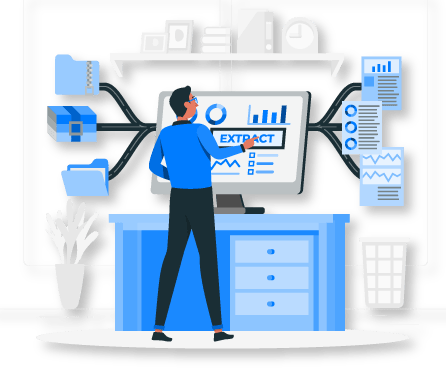
B2B Integration
What manufacturers need are integrable B2B solutions – solutions that integrate with various systems and applications, so they can seamlessly and (often) automatically communicate with each other. Benefits of B2B integration include: decreasing the time needed to communicate with suppliers and customers; reducing errors; increasing productivity and efficiency; enabling faster, analytics-based decision-making; and enhancing the company’s compliance capabilities.
Although some organizations try to integrate B2B e-commerce systems in-house, such efforts can be costly, time-consuming, and require significant IT expertise. For this reason, many manufacturers are turning to B2B solutions that offer simpler, and more cost-effective and efficient paths, for integrated systems.
Regardless of how they are implemented, it’s essential that B2B platform solutions possess the following five integration capabilities:
01. Integration of Legacy Technologies.
When a company’s legacy systems contain years’ – or decades’ worth – of valuable data, “out with the old, in with the new” may not be the best mantra. Instead, the organization may want a platform that leverages cloud-based technologies to bridge the gaps between the firm’s legacy technologies and its new digital systems and applications.
02. Scalability
The solution must be able to grow as quickly as the business, enabling the company to adopt new features, and add new users and integrations, as needed.
03. Future Flexibility.
04. Process automation
05. Integrating a wide variety of data types.
The Aleran Unified Commerce platform will get you selling without limits.
Talk to Expert
CHAPTER 6
How to Win in an Evolving B2B Landscape
- Self-Service in B2B E-Commerce
- Vertical B2B Marketplaces are Soaring
- 5 Must-Have B2B Integration Capabilities

Avoid These Common B2B E-Commerce Mistakes
As any consumer can tell you, not all online stores are created equal. In today’s hypercompetitive digital commerce landscape, B2B e-commerce shops that are complicated, outdated, or confusing will send potential customers running to spend their money elsewhere.
Here are 5 common e-commerce mistakes you don’t want to make:
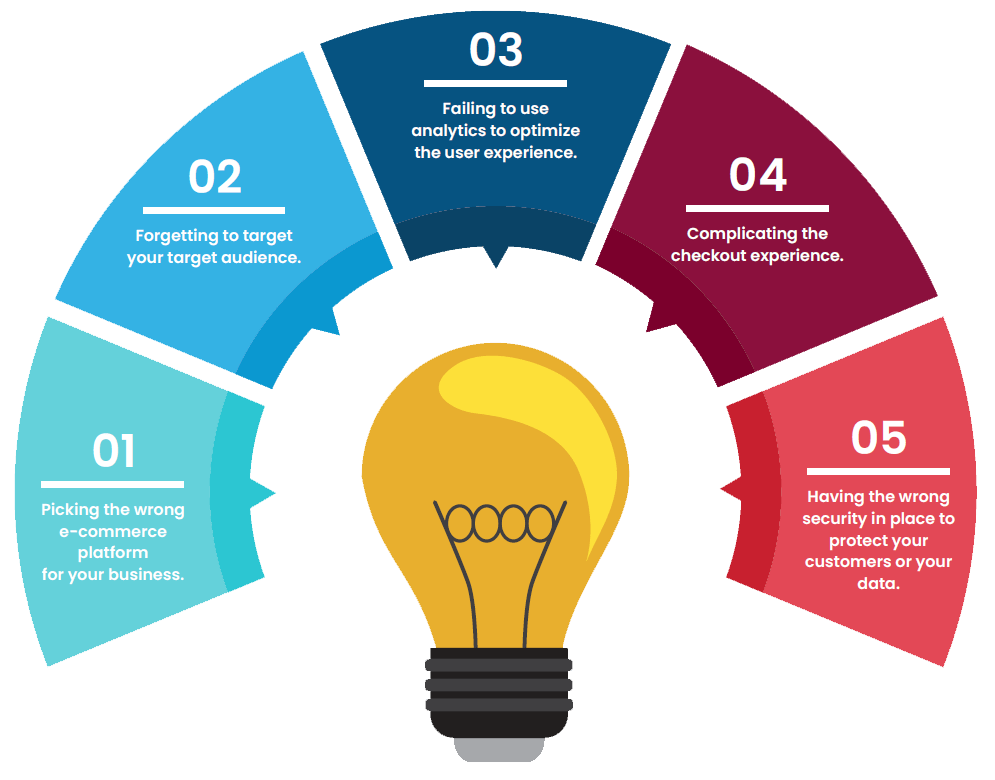
#1 Picking the wrong e-commerce platform for your business.
From hidden costs and fees to the wrong feature set, choosing the best-fit e-commerce platform for your business requires research and consideration. In other words, take the time to understand the benefits and downsides of different platforms and selling models. To maximize value and return on investment, look for an e-commerce platform solution that offers dedicated options for B2B and B2C e-commerce, alongside marketplace capabilities. The right solution will scale with your business, offering tools and technology to connect with, and meet the respective needs of, buyers, reps, agents, and channel partners alike.
How to Win in an Evolving B2B Landscape
- From groundbreaking technological innovations to changing customer behaviors, the B2B landscape has remade itself over the past decade, replacing expensive and overly complex legacy manual processes with streamlined digital e-commerce solutions.
- In the wake of the Covid-19 pandemic, which all but eliminated in-person sales experiences, even organizations in sectors where old fashioned paper transactions have held fast (insurance, government, and healthcare — to name a few), we are seeing an overnight shift toward e-commerce sales strategies and platforms. Digital solutions are dominating the post-Covid-19 sales era.
Digital Natives and the Millennial Effect
- Born between 1981 and 1996, Millennials are omnipresent in today’s global workforce. These individuals, often described as digital natives, have grown up using the technology that’s changing the way we do business — from computers and the internet to smartphones.
- Now that Millennials are largely at the helm as the primary B2B decision makers, the industry has witnessed huge changes in customer behavior – from how research is conducted to the ways in which vendors are engaged and purchase decisions are made. Millennials like being in control of their transactions, whether they are searching online, reading reviews, checking out social media, visiting a website, watching product demos, or making a purchase. As a cohort, the Millennial preference for digital experiences and transactions is beyond dispute.
The Amazon Challenge
- Pre-Covid-19, Amazon was already inserting itself into the B2B marketplace in a way that was hurting many SMBs – and even many larger players. Why? Because in an online marketplace like Amazon, you have no choice but to sell alongside your competitors, with price as the primary differentiator. As e-commerce sales continue to skyrocket, Amazon’s commanding market share will continue to grow. For manufacturer/vendors’ sales representatives and sales agencies, staying competitive in this radically changing B2B landscape will likely come down to one data point: how well do you sell online?
- Tech platforms that help sales representatives do their work remotely, which streamline time-consuming administrative tasks, and which allow you to build online marketplaces quickly represent a real way forward for SMBs.
B2B E-Commerce Implementation
- Aleran’s Unified Commerce Platform was designed to meet the demands of today’s B2B sales landscape. In addition to helping you to run your sales back office and streamline order management, it offers a suite of e-commerce solutions that enable you to create custom websites and clickable product catalogs in minutes.
- Aleran’s end-to-end platform solutions are designed to work seamlessly together out of the box, and also as a headless integration with your ERP, CRM, OMS, Marketplaces via our large library of REST APIs to fit your unique business requirements.
- Our Unified Commerce Platform makes selling simple, using patented technology solutions and built-in feature sets that automate and simplify your sales order management process.
- Connect your warehouse, accounting, and other ERP systems with Aleran’s vendor management and e-commerce solutions for manufacturers. Manage your orders and commissions payments, create digital shops, catalogs, wholesale showrooms and marketplaces and get real-time revenue intelligence with our solutions for sales orgs and agencies. Expand your offerings, reach new customers and drive conversions with our B2C e-commerce site builder and award-winning merchant services for retailers.
- Each part of the Aleran platform gives manufacturers/vendors, sales agencies, and reps the tools they need to thrive in today’s digital-first sales environment.
Avoid interacting with salespeople during the early phases of the purchase process. In a recent survey, 60% of Millennials said they actively avoid sales reps until midway toward a decision. Post-pandemic, 70% to 80% of all B2B decision-makers prefer either remote human interactions or digital interactions throughout the sales process.

Want digital B2B e-commerce platforms to offer end-to-end solutions, flexible payment methods and self-service functionality. In 2020, 70% of B2B decision-makers said they would make self-service purchases in excess of $50,000.
Expect more personalized service from B2B sellers. In a 2017 survey, 73% of B2B executives said that customer expectations for personalized service are now significantly higher than they were just a few years earlier.
Although some of these buyer preferences and behaviors have been fueled by the pandemic, most B2B sellers view them as part of the “new normal,” not short-term anomalies.

